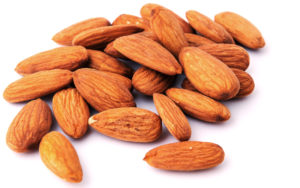End and Reverse Diabesity with the Setpoint Diet
Diabesity is a term used when obesity and type 2 diabetes occur simultaneously, which has become increasingly common. The link between obesity and type 2 diabetes has been known for a long time, but it’s more than a mere link. These two diseases – yes, obesity is a disease – are interdependent. They are symptoms of the same hormonal disorder, which the Setpoint Diet can heal.
Diabesity and the Setpoint Diet
The rates of obesity and type 2 diabetes have been rising steadily for over four decades. Obesity is the biggest risk factor for type 2 diabetes, and according to the Centers for Disease Control, most people who are obese will develop type 2 diabetes. This means that the diabesity epidemic we have now – 50 percent of Americans over 65 already suffer from diabesity – is nothing compared to what it will become.
But there is hope. The Setpoint Diet can prevent diabesity, and you won’t feel weak or hungry while the fat melts away.
Setpoint Diet: The Key to Lasting Weight Loss
When you go on the Setpoint Diet, you’ll eat real foods that fill you up. There is no calorie counting or starvation. You’ll learn a way of eating that is enjoyable, one that you can easily maintain the rest of your life.
You’ll always feel like you’ve had plenty to eat, and you’ll probably be surprised to see the weight coming off. Your chances of developing diabesity will fall along with your weight.
Why Most Diets Fail to Reverse Diabesity
If you’ve had problems keeping your weight down, you know how aggravating and depressing it can be. No matter what new – or old – diet plan you try, it doesn’t work. You lose 20 pounds, you gain 35; you lose 50, you gain 70. It’s two steps forward and three steps back – always. You’ve wanted to give up so many times, but you can’t. You want to be healthy, avoid or reverse diabesity, feel good and look even better.
Why can’t you do what naturally thin people do so naturally? You can, but you won’t do it by trying to starve yourself.
Calories Are Not All That Matter in Diabesity
For decades, we’ve been taught that counting calories are all that matters in weight loss. All calories are the same, they said, and it doesn’t matter where those calories come from. If you want to drink two sodas and eat a bag of chips every day for lunch, that fine – as long as you stay within your allotted daily calories.
Wrong!
Science has proven a calorie is not the same as every other calorie, that it matters a great deal where that calorie comes from. All macronutrients, you see, go through different metabolic processes and have different effects on our metabolisms. It is very easy for your body to turn carbohydrates into fat, for instance, but impossible for it to do the same thing with protein.
About that Calorie Deficit…
We’ve also been taught that weight loss is like a scale. If you want to lose weight, you have to burn more calories than you take in (calorie deficit.) That, the experts assured you, would reliably give you a 1-2 pound weight loss per week. 
There was only one problem – it never worked like that. You would lose a few pounds quickly, and then it would slow way down. Maybe you were lucky if you even lost a full pound while starving yourself! You knew what “they” told you were wrong, but nobody had anything different to say. It was always based on cutting calories.
Decades later, we have a diabesity epidemic precisely because cutting calories didn’t work for hundreds of millions of people.
Setpoint Weight: Key to Reversing Diabesity
The truth is that your body is not like a scale, it is like a thermostat. Your body regulates your calories around your setpoint, a weight it has decided you are supposed to weigh. If you lose weight below that setpoint, your body will fight you every step of the way. Your metabolism will slow. You’ll be hungry. You’ll feel tired. This is your body’s way of saving your life because it thinks you’re starving.
If you keep at your low-cal diet long enough, you will lose weight. But if you ever try to eat normally again, you will regain every last pound you lost – plus quite a few pounds more. To maintain your trim figure, you’ll need to be on a diet the rest of your life, and even that’s not a sure thing. Your body will match the consistently low calories by lowering your metabolism, and if you want to lose any more weight or keep the weight from creeping back on you will have to eat fewer and fewer calories. which causes the body to adapt by lowering the metabolism. It’s an unrealistic and unsustainable model.
To lose weight permanently, you’ll need to lower your setpoint weight. Once you do that, your body will try as hard to keep you thin as it now tries to keep you heavy.
Why the Setpoint Diet Works for Diabesity
The setpoint diet works because it addresses the real cause of diabesity – dysregulated hormones. These hormones tell you when you’re hungry and when you’re full. They tell your body when to burn fat, and when to store it. If you eat a low-quality diet filled with starches, sugars, and processed foods, it creates a clog in your hormonal system. They cannot send proper signals to tell your metabolism to speed up or tell you to stop eating.
Water, Fiber, and Protein for the Setpoint Diet
The Setpoint Diet addresses these issues by focusing on foods that nourish your body, are filling, and cannot be stored as body fat. Science has shown that foods containing water, fiber, and protein create a feeling of satiety to the body, meaning that they make you feel full. When you feel full, you won’t turn to low-quality starches and sugars that raise your setpoint weight.
To lower your setpoint weight, replace starches and sugars with non-starchy vegetables, high-density proteins, whole-food fats, and low-fructose fruits.
While eating these foods, you will fill up quickly and feel full longer. In this way, you will accidentally eat fewer calories. Calories are important in weight loss, but eating SANE foods are so filling and nutritious the body feels safe dropping pounds and lowering your setpoint weight.
So say goodbye to the yo-yo, and hello to SANE foods!

